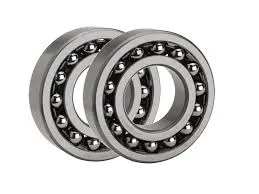
Dec . 18, 2024 10:28 Back to list
Comprehensive Guide to Cylindrical Roller Bearing Specifications and Applications
Understanding Cylindrical Roller Bearings A Comprehensive Overview
Cylindrical roller bearings (CRBs) are vital components in many machine applications due to their impressive capacity to handle radial loads while maintaining a compact design. These bearings are characterized by cylindrical rollers that are in linear contact with the inner and outer races, allowing for high load-carrying capacity and efficient operation. In this article, we will delve into the features, applications, and advantages of cylindrical roller bearings, providing insights into their role in modern machinery.
Key Features of Cylindrical Roller Bearings
Cylindrical roller bearings are designed to accommodate heavy radial loads with minimal friction. The principal feature of CRBs is their rolling element shape; cylindrical rollers provide a larger contact area with the races compared to spherical rollers, enhancing load distribution. Additionally, their unique geometry facilitates higher speed applications and reduces heat generation, which is critical for maintaining performance.
Another significant aspect is the variety of designs available. Standard configurations include single-row, double-row, and multi-row bearings, allowing for customization based on specific application requirements. Many cylindrical roller bearings come with integral flanges to guidance and prevent roller skewing, while others offer a detachable design for easier assembly and maintenance.
Applications
Cylindrical roller bearings are employed in numerous applications across various industries. Their exceptional strength and durability make them ideal for use in heavy machinery, such as construction equipment, mining machinery, and industrial gearboxes. They are also prevalent in the automotive sector, where they can be found in applications ranging from wheel hubs to gearbox assemblies.
cylindrical roller bearing catalog

In the manufacturing industry, CRBs are essential components in electric motors, pumps, and conveyor systems. Their ability to handle high radial loads with low friction makes them suitable for high-speed operations, which is critical in production environments where efficiency is paramount.
Advantages of Using Cylindrical Roller Bearings
One of the primary advantages of cylindrical roller bearings is their high load capacity. Thanks to their design, they can support significant radial loads, making them suitable for heavy-duty applications where reliability is crucial. Their ability to reduce friction translates directly to lower energy consumption, contributing to overall operational efficiency.
Additionally, cylindrical roller bearings are designed for long service life. With proper installation and maintenance, they can withstand extreme operational conditions, including high speeds, heavy loads, and variations in temperature. This enhances machine productivity by reducing downtime due to bearing failures.
Furthermore, the adaptability of CRBs allows for varied configurations, such as sealed or shielded designs that provide protection against contaminants and extend operational life. This feature is especially advantageous in harsh working environments, where exposure to dust, dirt, and other detrimental elements can compromise bearing performance.
Conclusion
In summary, cylindrical roller bearings are essential components in many industrial and automotive applications due to their high load-carrying capacity, durability, and efficiency. Their unique design characteristics make them versatile and reliable choices for a wide range of machinery. Understanding the features, applications, and advantages of cylindrical roller bearings can help engineers and manufacturers select the appropriate bearing for their specific needs, ultimately enhancing performance and productivity in their operations. As technology continues to advance, the demand for efficient and reliable bearing solutions will only grow, underscoring the importance of CRBs in modern machinery.
Latest news
-
Grooved Ball Bearing Design and Functionality
NewsJun.04,2025
-
Concrete Mixer Bearing Load Capacity Testing
NewsJun.04,2025
-
6004 Bearing Dimensions in Robotic Joint Designs
NewsJun.04,2025
-
Advantages of Single-Row Deep Groove Ball Bearings
NewsJun.04,2025
-
Applications of Deep Groove Ball Bearings in Automotive Systems
NewsJun.04,2025
-
Innovations in Bearing Pressing Machine Design
NewsJun.04,2025
